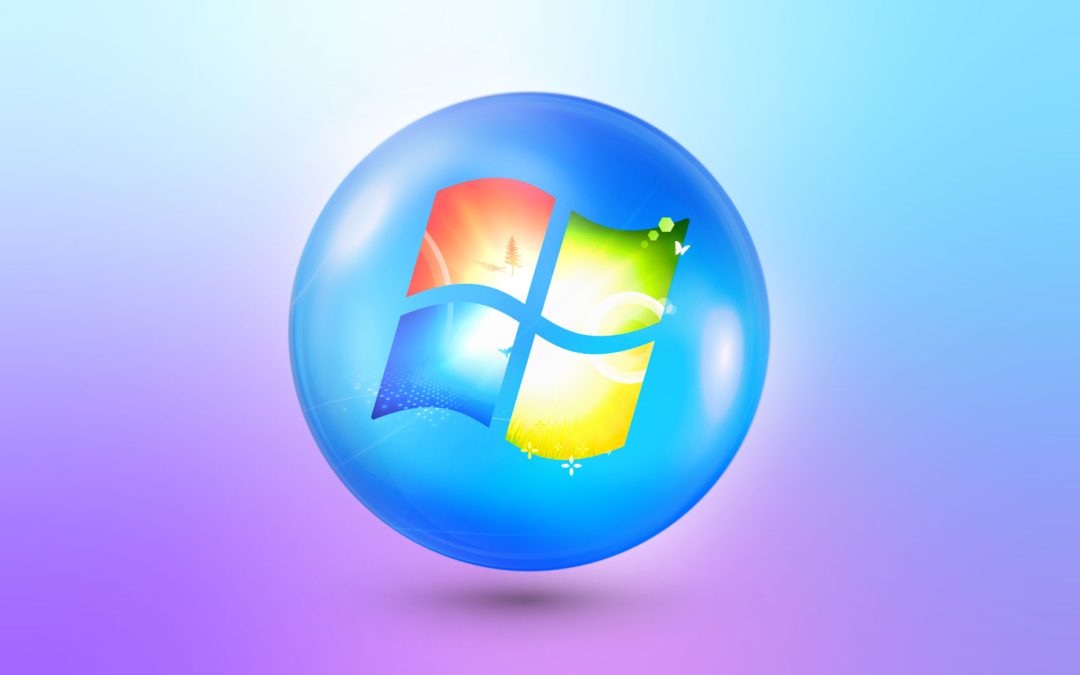Yup, Windows 7 is about to take that hike down the ol’ dusty trail called Tech Obsolesce. Everyone hates goodbyes—I whimper every time my dad leaves for work without me—but no need to whimper for Windows 7. It had a good long run but that run comes to end next January.
Microsoft isn’t messing around on this one, and says it will end its already Extended Support for Windows 7 and people are starting to take action. As of January 2019, around 45% of PC operating systems are now on Windows 10, finally surpassing Windows 7 at 41%. So, with January 2020 approaching rapidly, it begs us to ask the question (even though I was taught not to beg); Are you prepared for the inevitable upgrade to Windows 10?
When the clock strikes midnight on 2019 and on Windows 7, you won’t be “kicked off” the OS per say. You can still use Windows 7, but there will be no more patches and updates and security hole fixes—and I don’t mean to disparage Microsoft but Windows 7 has had more holes exposed than a decent slice of Swiss cheese (ohhh, I Iove cheese).
So, we highly, highly, HIGHLY recommend you make the switch to Windows 10 before that happens. Take a look at what happened organizations that stayed with Windows XP after that OS lifecycle ended. A large number of the organizations that stayed with XP ended up becoming the victims of serious cyber-attacks like the WannaCry ransomware.
So now that you know you need to move on from Windows 7, you need to have a plan in place. Here’s my rundown on what to do and when to do it…
The first thing you’re going to want to look at is your current hardware. Are your devices compatible with Windows 10? If your device meets the requirements in this link your hardware will be capable of handling the upgrade to Windows 10. If some of your devices don’t meet these requirements, then you’re going to need to upgrade some of your equipment. Typically, any computer in the past 3 years should be okay to go. You’ll want to take a look at the devices connected to your hardware as well. This includes things like monitors and keyboards. Do a little bit of research and make sure your current equipment will be good to go on Windows 10—even the pros have made misses on sneaky things like an old label printer or external drives that are only used on occasion. Be thorough!
After you look at your hardware you need to move on to the software your company uses. Make a list of the software and check if the version you are on is compatible with Windows 10. Any software version that isn’t compatible needs to be brought up in discussions and have a plan be made about how you’ll want to replace it. Watch plug-ins you might be using for things like QuickBooks or Great Plains, etc. Essentially, make a list of software that’s Windows 10 ready and those that aren’t and make a plan for your software laggards. You want to do this before doing OS upgrades… trust me.
Your next step is going to be making sure you have the proper licensing to upgrade to Windows 10. This gets tricky because you might not need to purchase Windows 10 licensing if you have, for example, volume licensing with upgrades included. Additionally, some Windows 7 installs out there are actually Windows 10 but with “downgrade” rights—meaning you actually got Windows 10 but chose to install the Windows 7 parts and pieces to it. If you have these versions of Windows 7 (each machine has to be checked individually to tell) you can upgrade for free. If you have just plain-ol’ Windows 7, then you need to purchase Windows 10. Typically, you need to check with the hardware maker like Dell, HP, etc. to see if you have regular or downgraded Windows 7.
If you have any questions about making this upgrade, making a plan for this upgrade, or want us to do it for you, don’t hesitate to reach out to me and my Groff NetWorks family. You can give us a call at 518-320-8096 or contact us on our website anytime. Happy trails Windows 7!

